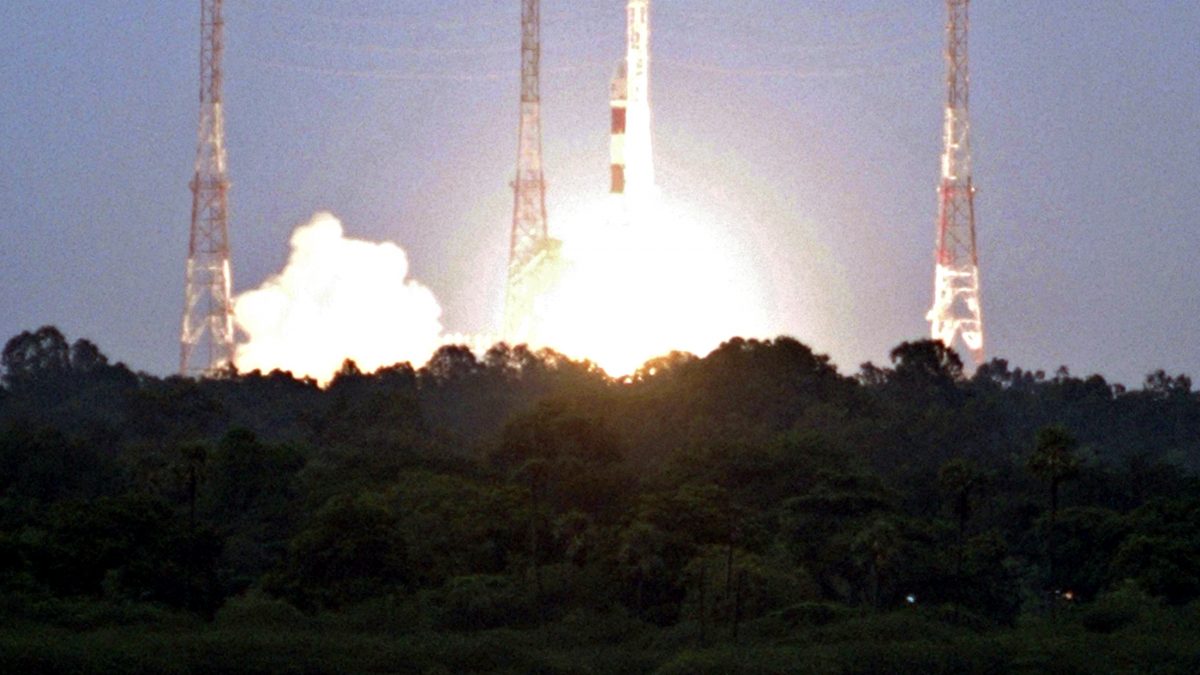October 22, 2008, was a historic day in India’s aerospace history as Chandrayaan-1, the country’s first mission to the Moon, was launched. Developed by the Indian Space Research Organisation (Isro), this ambitious project signalled India’s emergence as a serious player in lunar exploration.
If you are a history geek who loves to learn about important events from the past, Firstpost Explainers’ ongoing series, History Today will be your one-stop destination to explore key events.
On this day in 1797, the first successful parachute jump in the world was recorded in Paris, France. In 2012, former professional cyclist Lance Armstrong was officially stripped of his seven Tour de France titles by the United States Anti-Doping Agency (USADA).
Here is all that took place on this day across the world.
The launch of Chandrayaan-1
India marked a historic milestone in space exploration with the launch of Chandrayaan-1 on October 22, 2008. Developed by the Indian Space Research Organisation (Isro), this ambitious project signalled India’s emergence as a serious player in lunar exploration. The spacecraft was launched from Satish Dhawan Space Centre in Sriharikota aboard a PSLV-XL rocket, highlighting India’s growing capabilities in precision space launches.
Chandrayaan-1 was designed to orbit the Moon and conduct high-resolution remote sensing, aiming to gather detailed data about the lunar surface. Its payload included 11 scientific instruments, some developed in collaboration with international space agencies like the National Aeronautics and Space Administration (Nasa), European Space Agency (Esa), and Bulgaria. Among its objectives were mapping lunar mineralogy, studying the distribution of elements such as magnesium, aluminium, and silicon, and searching for water ice in permanently shadowed craters near the poles.
The mission achieved remarkable success, particularly in October 2009, when Chandrayaan-1’s Moon Impact Probe and Nasa’s Moon Mineralogy Mapper detected water molecules on the lunar surface, a discovery that reshaped understanding of the Moon’s composition and potential for supporting future exploration. Over its 10-month mission, the spacecraft transmitted more than 70,000 images, contributing vast amounts of data for global scientists.
Chandrayaan-1 officially ended its communication with Earth in August 2009, but its legacy endures. The mission not only demonstrated India’s ability to undertake sophisticated space projects but also boosted international recognition of Isro’s capabilities. It paved the way for Chandrayaan-2 and future lunar endeavours, inspiring a new generation of scientists and engineers.
The first successful parachute jump was attempted
On this day in 1797, the world witnessed a daring feat that would lay the foundation for modern parachuting - the first recorded parachute jump. The pioneering jump was carried out by André-Jacques Garnerin, a French aeronaut and inventor, in Paris, France. Garnerin, already known for his work with hot-air balloons, sought to demonstrate a safe method of descending from great heights, an idea that had fascinated scientists and inventors for centuries.
Garnerin’s jump took place from a hydrogen-filled balloon that ascended over Parc Monceau in Paris. Attached to a canopy parachute made of silk, Garnerin jumped from the balloon at approximately 3,200 feet (975 metres). Unlike modern parachutes with rigid frames, his design was frameless, relying on the air’s resistance to slow descent.
Notably, Garnerin omitted a vent at the top, which sometimes caused the parachute to sway violently. Despite the risks, he landed safely in a field outside the city, astonishing the gathered spectators and marking a milestone in aviation history.
This leap proved that controlled aerial descent was possible, inspiring further experimentation with parachutes. Garnerin continued to refine his designs, conducting multiple jumps across France and Europe, and even demonstrating descents from different altitudes. His work laid the groundwork for military applications, eventually influencing parachute use in airborne operations, rescue missions, and later recreational skydiving.
Lance Armstrong stripped of seven titles
Former professional cyclist Lance Armstrong was officially stripped of his seven Tour de France titles by the United States Anti-Doping Agency (USADA) on October 22, 2012. Armstrong, once celebrated as a cancer survivor and cycling legend, had dominated the sport from 1999 to 2005, but allegations of systematic doping had long shadowed his career.
USADA’s investigation revealed that Armstrong had orchestrated a sophisticated, team-wide doping programme involving blood transfusions, banned substances, and evasive tactics to avoid detection. The 1,000-page report, built on testimonies from former teammates and support staff, painted a picture of organised deceit at the highest levels of professional cycling. Armstrong initially denied the allegations for years, aggressively defending his legacy and even threatening legal action against critics.
However, the evidence proved overwhelming. USADA’s decision not only stripped Armstrong of his Tour de France victories but also banned him for life from all sanctioned cycling events. The International Cycling Union (UCI) later endorsed the decision, formally removing Armstrong’s name from official records. Armstrong’s fall from grace sent shockwaves through the sports world, undermining public trust in professional cycling and sparking wider debates on performance-enhancing drugs in athletics.
This Day, That Year
In 2010, WikiLeaks released thousands of US documents relating to the wars in Iraq and Afghanistan.
Sam Houston was inaugurated as the first president of the Republic of Texas.
)